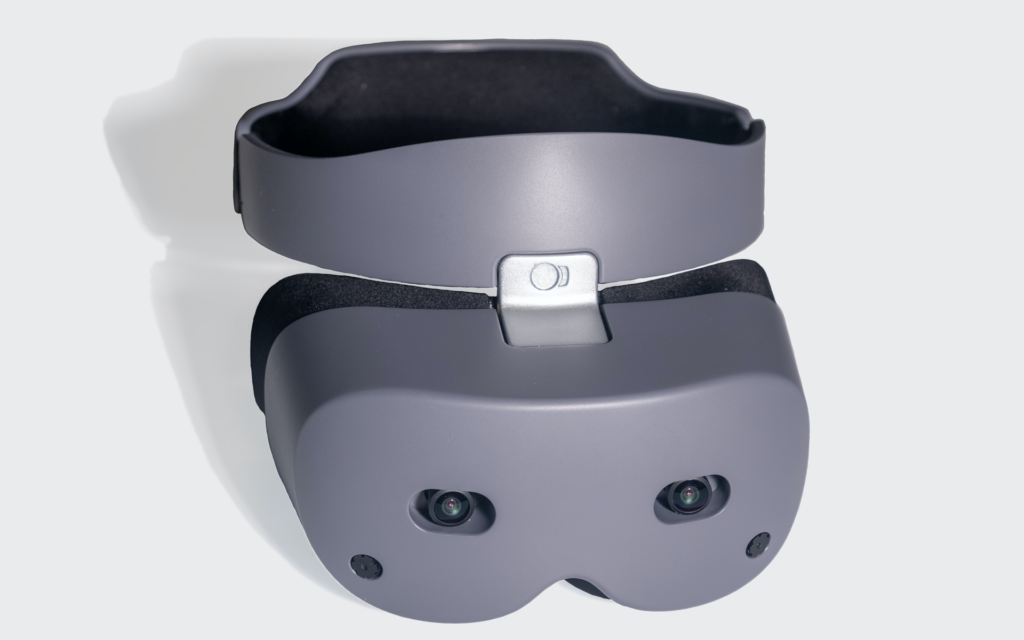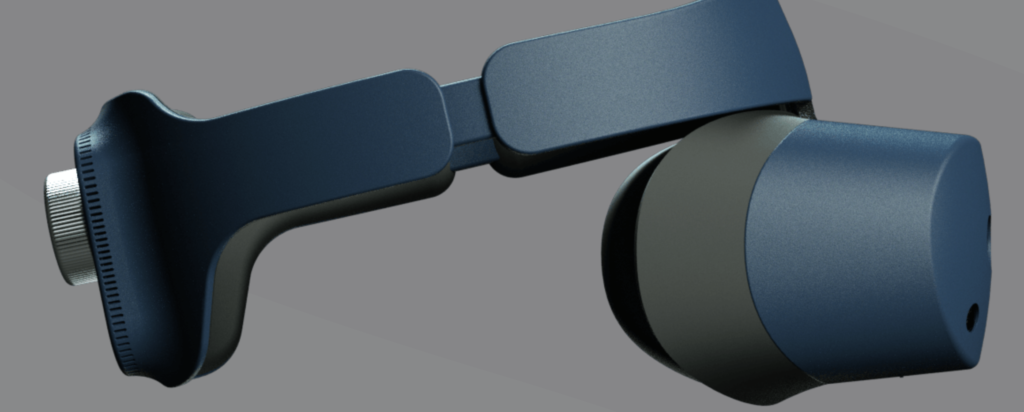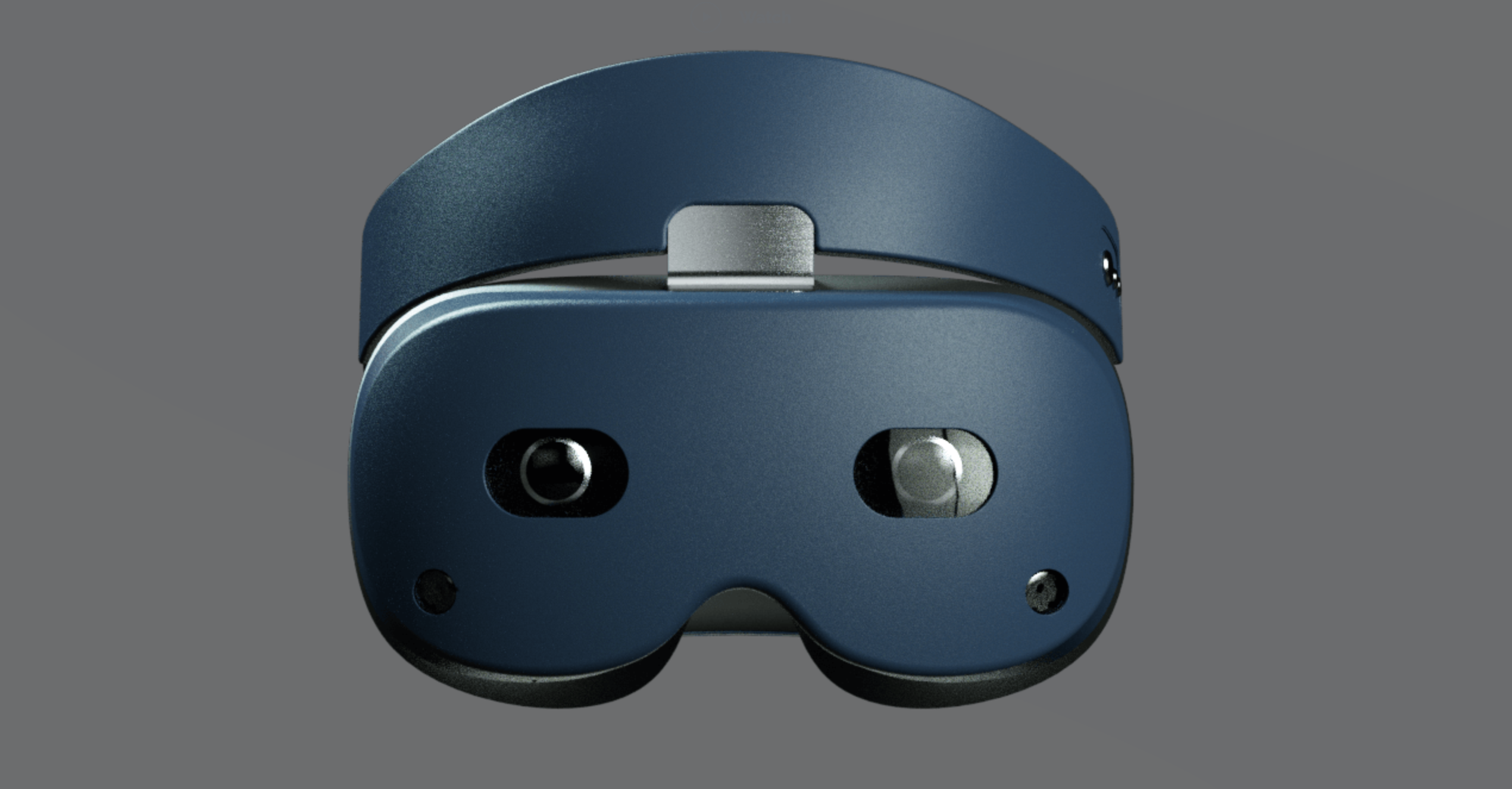The announcement and reveal of the LYNX headset has been on the horizon for a few weeks. The French-based startup company finally showed off their headset, the LYNX-R1, yesterday during the SPIE Photonics West conference in San Fransisco. This was previously hyped up as a headset capable of both AR and VR, but during the demo yesterday, the majority of the focus was on the augmented reality side. The LYNX-R1 is priced at $1,500 and will be shipping out this summer.
This is a passthrough AR headset, meaning it completely covers your eyes. This is different than the Hololens or Magic Leap, as those are see-through. See-though headsets limit your field of view and on-board computing options. Passthrough AR headsets are simply better right now, as AR optics without a headset are limited due to the new technology that is constantly being introduced to the front lines.
Passthrough headsets use the same display as VR headsets. They cover your entire field of view with the lens and screen while the exterior cameras capture the real world and project it into your headset. This allows your digital overlay to consume your entire field of view. The cameras on most of these headsets are limited, making the world look much less real than you’d hope. This is something that is given up for the larger FoV right now.
Specs
The inner workings of this headset are impressive. The LYNX-R1 is using dual LCD panels that make up a resolution of 1600×1600. The refresh rate will be at a constant 90Hz. Because the headset is rocking with LCD rather than PenTile OLED, you’ll be able to see the sharpness of the real world around you, while giving up a but of the range of vibrant colors. The lens of this headset are anything but normal too, as they are “4-fold catadioptric freeform prisms” that form a circular field of view of 90°.

The outer cameras have some work to do to truly be ‘high-end’, but it’ll get the job done for now. There are four cameras, and only two of them are meant for the passthrough feature. The other two are used for positional tracking, AR mapping, and hand tracking.
On the interior of the headset you’ll find two different mics and two different speakers, that are meant for spatial audio and spatial communication capturing.

As for the charging of this standalone headset, you’ll be setup with a USB-C port. This is capable of fast charge. The battery itself is only capable of 2 hours of “active use” right now, but the team is going to work on that before shipment.
Truly Standalone
The LYNX-R1 is a truly standalone AR passthrough headset. LYNX is rolling with the Qualcomm XR-2 Chipset for this headset. Its a variant of the popular Snapdragon 865 that is meant for cases with headsets. This headset is working with a chip that is nearly double the power of the Oculus Quest (the Quest has a chip that is as powerful as the iPhone 6S). The LYNX-R1 also has an onboard storage of 128GB while working with 6GB of RAM.

This isn’t the first passthrough AR headset that is capable of being fully standalone. This headset is very similar to the Varjo XR-1 and the newest XTAL headset. What separates the LYNX headset is the 6DoF tracking with the hand tracking. That is new to the standalone AR world.
Put the PC away and wrap up your cords. The LYNX-R1 is only going to wired connections when charging. This is the next step to augmented reality.
Enterprise Focused
Because this headset is priced at $1,500, you aren’t going to see many consumers entertain the idea of purchasing it. This is a headset that is meant for companies looking to get some shared experiences and AR into their office. This is going to fill a major gap in the industry right now.

The best AR headset for businesses is the Hololens 2. That comes at a price point of $2,000, something executives may not want to buy in bulk. Although the LYNX-R1 is only $500 cheaper, it has some features that may make the headset more versatile for companies with a less exact use for an AR headset. This is will be a great headset for a company that is looking to find the uses of mixed reality in their workspace.
Pre-orders are live now and the headset is expected to ship out sometime in the summer of 2020. For more VR news and community updates, make sure to check back at VRGear.com.






























